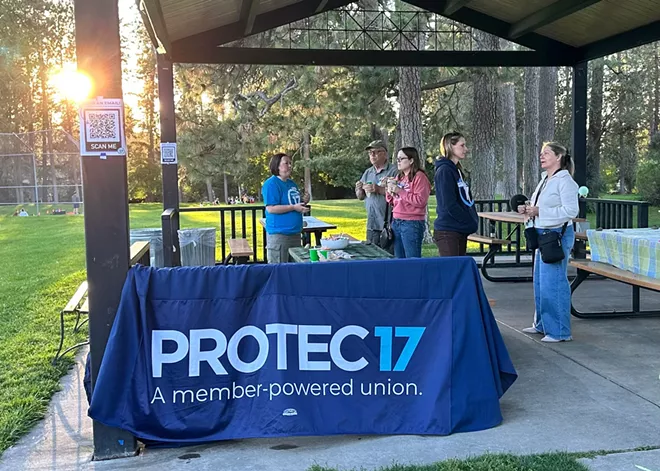
In April, the Spokane Regional Health District's health board decided to conduct a feasibility study to determine whether the district's opioid treatment program should become its own private entity.
At the time, district Administrative Officer Alicia Thompson argued that separating the program from the government entity could allow the program to operate nimbly outside the confines of slow-moving governmental processes.
The Spokane Regional Health District or SRHD has been running its opioid treatment services division for more than three decades. It started in 1990, before any other entity in Spokane offered methadone for opioid use disorder. Now it's the largest single-site opioid treatment program in the state, serving about 1,000 clients for opioid and substance use disorder.
The first step of the feasibility study was to gather as much feedback as possible to understand how clients, employees and the community feel about privatizing the service. Thompson will present her findings at the Board of Health's Sept. 26 meeting.
Last week, PROTEC17, the union representing a majority of the health care staff at SRHD, organized a "shaved ice social" in Manito Park to raise awareness of the potential privatization and to openly discourage the health board from moving forward with the second step of the feasibility study.
"We have a functioning, successful program that actually saves lives," PROTEC17 Union Representative Suzie Saunders says. "So, why would they want to fix something that isn't broken? It just makes no sense."
Saunders was joined by about 10 other union members who also work within SRHD's treatment services division.
Due to the longevity of the program and its huge impact in the midst of an opioid crisis, some argue that privatization is just downright unnecessary.
"We're dealing with an opioid crisis and yet, we're talking about this huge seismic shift that's completely unnecessary," says Nick CastroLang, a PROTEC17 member who works in the district's treatment services division. "People come to us for stability, but it feels like anything but that right now."
CastroLang says that he and many of his coworkers are frustrated by the uncertainty this study has brought. If the program were to become its own entity, he says, many don't know if they would keep their jobs or if the care they provide would change.
"We came [to SRHD] for the good benefits and the good pay. But, people stay because you get to care about clients and treat addiction as it is — a disease," he says, arguing that a private treatment program would treat its clients as just numbers.
Shannon Warnken, a PROTEC17 member and a substance use counselor, says that she worked at a private opioid treatment program before beginning at SRHD in 2021. That change for her "was like going from hell to heaven," she says. While there were many factors that changed, she says the biggest difference was that her larger caseload at the private program led to clients getting insufficient care from her. At SRHD she has 89 clients, but she says at her previous job, she had 130. (Warnken declined to name the private program that she previously worked for.)
"I thought I was going to retire here [at SRHD]," she says. "Now, I just don't know what's going to happen."
Thompson has hosted three virtual town halls, held numerous listening sessions, and sent out client and employee surveys.
While the uncertainty that union members are feeling can be upsetting, Thompson says those feelings stem from the nature of the three-step feasibility study.
This first step has provided employees, clients and the rest of the community a chance to make their concerns known. But Thompson says that many of those concerns can only be addressed in the second step of the study.
If the study moves forward, Thompson will be tasked with analyzing treatment services' financial situation and assessing the legal and regulatory framework that they must follow if they choose to privatize.
"A lot of fears and concerns that have been raised cannot be answered yet, because we have not made it to step two," she says.
When Thompson presents her findings at the health board's Thursday meeting, she'll recommend two alternatives the board could take, she tells the Inlander.
First, she believes that based on the information gathered, there's good reason to end the feasibility study, leaving the opioid treatment program under SRHD, but also to make changes to the program's oversight. She did not elaborate on what oversight changes she would recommend.
The second recommendation would be to continue the feasibility study and begin step two. She stresses that this is still an information-gathering stage, so it does not mean that the program would separate from SRHD or change in any way yet.
"Under no circumstances, no matter what happens, will we have a gap in services for our clients. Our treatment services are not at risk of closing, and we will not move locations," she says. "This feasibility study is dedicated to finding a more efficient path to scaling this program. The opioid crisis is the reason we're even doing the feasibility survey." ♦
